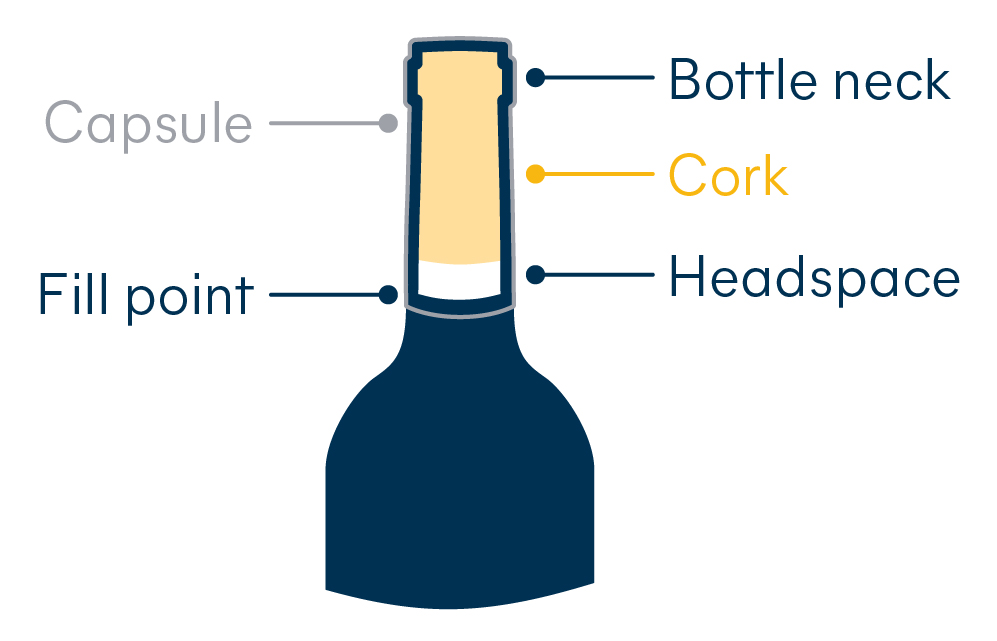Wine leaking from the cork: Tips to avoid or stop it
Sometimes wine bottles can leak in transit, so we asked ourselves, “is the problem global wine transportation, or is it something else?”
Our study revealed that on the rare occasion there is wine leaking from the cork, it was due to the seal and closure failing. Leakage can be caused by factors including improper cork selection.
This can damage labels and cartons and add cost while diminishing brand integrity.

What causes wine leaking from the cork?
Our research showed that the major sources of leakage caused by seal failure in bottled wine are excessive pressure in the bottle and on the closure, and bottle faults.
So, when filling and closing a bottle, here’s what should be taken into consideration:
Filling the bottle
Wine should be bottled at (or near) ambient temperature, not in cold conditions.
Too chilly, the wine will expand as it becomes warmer, creating pressure in the bottle. For inserted closures, the length of the closure affects the fill height.
Allowing sufficient bottle headspace (the gap filled with gas between the wine and the closure) can counteract the issue of wine leaking from the cork.

Closing the bottle
Although pressure can cause wine leaking from the cork, corks and synthetic closures require a certain amount of pressure inside the bottleneck to maintain an effective seal.
Keep in mind that the cork does not need to be driven in all the way to form a sufficient wine bottle seal. But, the cork will leak if it’s not inserted far enough to completely seal the wine bottle opening.
The bottleneck bore profile also impacts the sealing of inserted closures. The seal of a screw cap, on the other hand, relies on the integrity of the gasket in the top of the cap and a smooth bottleneck rim.
Price, material quality and product to be filled also weigh heavily in the choice of closure.
Packing the bottle
It’s nearly impossible to tell if a cork has an internal fault that may cause it to fail.
The quality of the material and the upright position of the bottle for a time after filling (cork recovery) should create an effective seal. More obviously, physical damage from denting due to mishandling greatly compromises seal integrity.
Take a look at our website for information on international transport services for wine bottles in full loads or less than full loads.
Why does wine sometimes spoil?
Wine can spoil on its journey from A to B and this can be attributed to several factors, including:
- Bottle shock: Wine that has travelled for an extended period of time after bottling without protection from temperature and humidity can spoil. When this happens, the wine's aromas are muted, and the wine smells like nothing.
- Cork taint: Cork taint or trichloroanisole (TCA) results from fungi that grow on the bark of trees used to make wine corks. TCA can also get into wine through other means, such as contact with contaminated barrels. Wine tainted by TCA will have an intense smell.
- Oxidation: Wine can also spoil if exposed to oxygen, which can allow bacteria in. When this bacteria grows, it turns into acetic acid that gives wine a vinegar-like flavour.
How to determine when wine has deteriorated?
You can usually tell when a wine’s quality has been compromised if:
- Its flavours taste "off." If the wine tastes spoiled, flat or has an unpleasant aftertaste.
- It has an unpleasant smell. This is probably the best way to tell if the wine is showing signs of deterioration. If it smells like a damp basement, mould, soggy cardboard, vinegar or a wet dog, you probably don’t want to consume it.
- The color has changed. If the wine is no longer the same color as when it was first bottled, showing signs of brown hues.
- There is wine leaking from the cork. Check to see if the cork pushes out from the wine bottle or if it is soaked or broken.
Wine leaking from the cork: How to save bad wine
If the wine has gone bad because of oxidation or being infected with TCA, there is nothing that can be done to save it.
However, if the wine suffers from bottle shock, it may be possible to save it by decanting it for about 24 hours to recover its aroma.
How Hillebrand Gori can help
Wine leaking from the cork is often caused by improper cork selection or tightening of closures.
By taking care when filling and closing bottles, and being mindful of how they are stored and handled, the incidence of seal failure and leakage can be significantly reduced.
Our experts are here to guide you on how to transport your bottled wines safely to their destination, in the shortest possible transit time and in a way that preserves their quality.
Published 1st May 2023, updated 23rd January 2024
Yes, a dried-out cork can cause wine leakage. This is because the cork becomes brittle and no longer forms a proper seal, allowing air to enter the wine bottle and causing it to spoil.
Store wine bottles in a horizontal position. This allows the wine to stay in contact with the cork, keeping it moist and preventing air from seeping into the bottle.
Humidity occurs when moisture builds up inside shipping containers due to temperature differences between the inside and the outside environment. Excess humidity can cause corks to expand or contract, leading to wine leakage.
How can we help your business grow?

.png?sfvrsn=786e1c6a_1)



